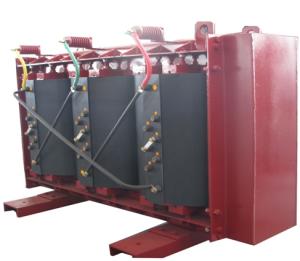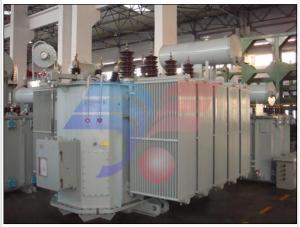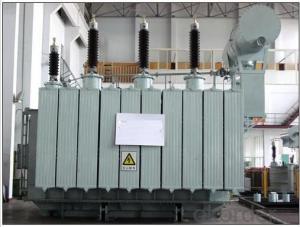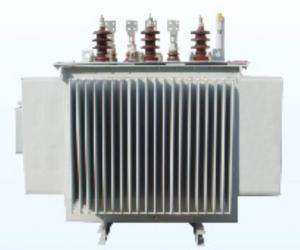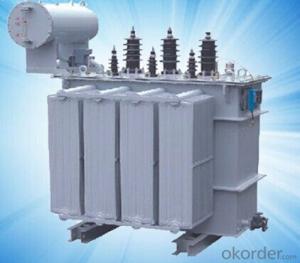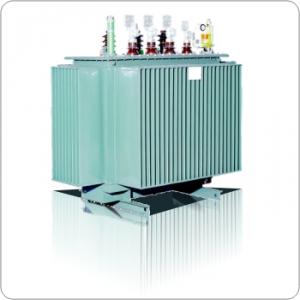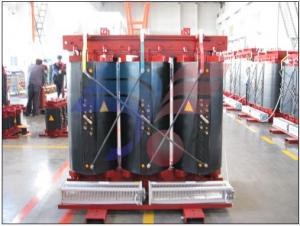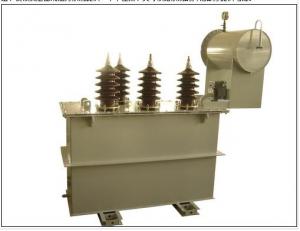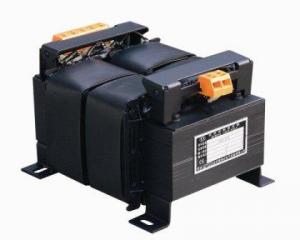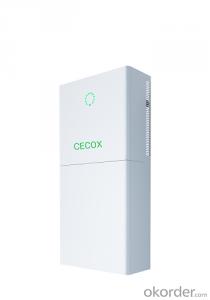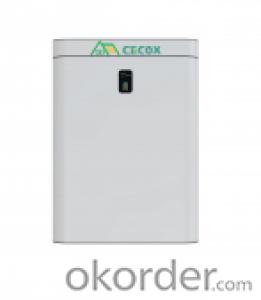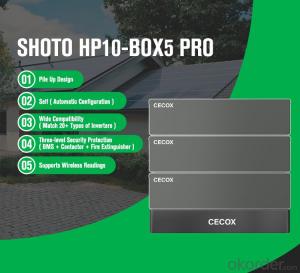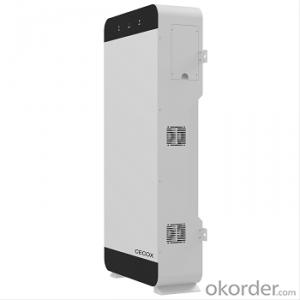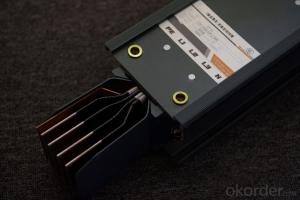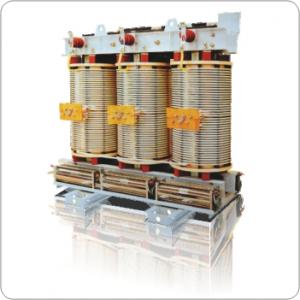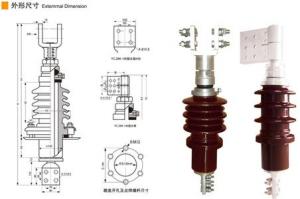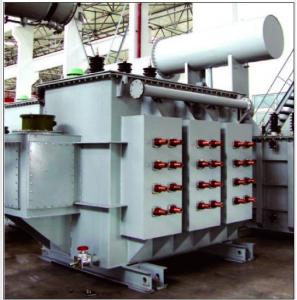Amorphous Alloy Core Dry-type Transformer of SCBH15
- Loading Port:
- China Main Port
- Payment Terms:
- TT OR LC
- Min Order Qty:
- -
- Supply Capability:
- -
OKorder Service Pledge
OKorder Financial Service
You Might Also Like
SCBH15 Series
Amorphous Alloy Core Dry-type Transformer
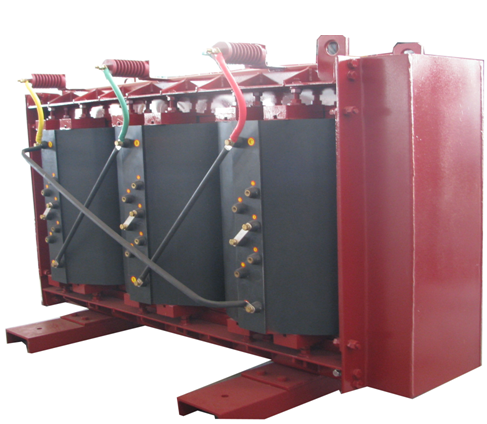
SCBH15 series amorphous alloy core dry type transformer is an efficient and energy savingnew type distribution transformer. It is acombination of technologies of amorphous alloy transformer and cast resin dry typetransformer and has the advantages of oil free, flame retardant,self extinguish, resistant to moisture, anti-cracking, free maintenance, and especiallylow no load loss. It has been widely used in railway, airport,station, high building, business center, and industrial and miningenterprises. It is particular well suited to inflammable andexplosive places.
Characteristics
●Low loss
Especially no load loss, 75% lower than ordinarytransformer at the same capacity, drastically reducingits operating cost and has obvious effect on energy-saving.
●Strong anti-short circuit capacity
Three-phase five-limb structure and frameprotection structure around iron core effectively ensure the capability of anti-short circuit.
● Low noise
The combination of reasonable design and carefultechnique makes the noise of products lower than the requirement of nationalstandard JB/10088.
● Highhumidity proof
HV&LV coils arevacuum epoxy cast resin, can be operated in 100% relative humidityand other harsh environment.
● Low temperature rise
Coils adopt thin resin structurewithout cracking and have strong ability for heatdissipation and overload.
● Flame resistance, self-extinguishment, explosion proof and no pollutionto environment
Glass fiber and other insulating materials used in coilsare self-extinguish and can not cause fire hazard because of electric arcproduced by short circuit.
Using Condition
●Altitude:less than1000m.
●Max.temperature: less than 40℃.
●Min.temperature: -5℃.
●Max.monthly average temperature: 30℃.
●Max.yearly average temperature: 20℃.
●Noobvious pollution in installation environment.
●Indoor
Insulating Level
Voltage Grade (kv) | The highest voltage effective value of equipment (kv) | Rated short-time applied withstand voltage (kV/min) | Rated lightning impact withstand voltage (peak) (kv) |
≤1 | 1.1 | 3 | -- |
6 | 7.2 | 20 | 60 |
10 | 12 | 35 | 75 |
Performance Parameter
Capacitance (Kva) | Voltage Assembly (kv) | HV tapping range (%) | LV (KV) | Connectiion | No-load loss (W) | No-load current (%) | Load loss (75℃)W | Impedance Voltage (%) |
200 | 6 6.3 6.6 10 10.5 11
| ±5 Or ±2×2.5
| 0.4 | Dyn11
| 200 | 0.7 | 2200 | 4 |
250 | 230 | 0.7 | 2400 | |||||
315 | 280 | 0.7 | 3020 | |||||
400 | 300 | 0.6 | 3480 | |||||
500 | 360 | 0.6 | 4260 | |||||
630 | 430 | 0.5 | 5150 | |||||
630 | 420 | 0.5 | 5200 | 6 | ||||
800 | 480 | 0.5 | 6070 | |||||
1000 | 550 | 0.4 | 7100 | |||||
1250 | 660 | 0.4 | 8460 | |||||
1600 | 750 | 0.4 | 10240 |
Outside Dimension
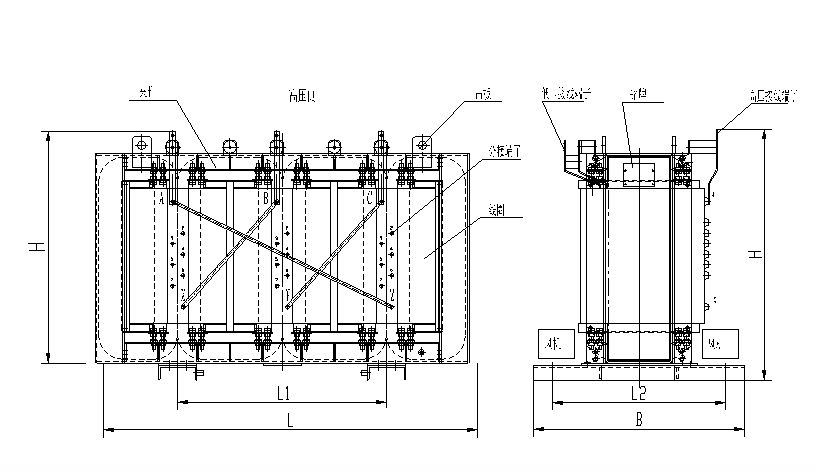
Type | Uk% | Dimension (mm) | Kg Weight (Kg) | ||||
L | B | H | L1 | L2 | |||
SCBH15-200/10 | 4 | 1450 | 1000 | 1230 | 660 | 660 | 1450 |
SCBH15-250/10 | 1650 | 1000 | 1280 | 660 | 660 | 1700 | |
SCBH15-31510 | 1700 | 1000 | 1290 | 660 | 660 | 1950 | |
SCBH15-400/10 | 1710 | 1050 | 1290 | 660 | 660 | 2230 | |
SCBH15-500/10 | 1750 | 1050 | 1300 | 820 | 660 | 2580 | |
SCBH15-630/10 | 1800 | 1100 | 1320 | 820 | 660 | 3210 | |
SCBH15-630/10 | 6 | 1850 | 1100 | 1310 | 820 | 660 | 3150 |
SCBH15-800/10 | 1930 | 1150 | 1330 | 820 | 660 | 3500 | |
SCBH15-1000/10 | 2080 | 1200 | 1360 | 1070 | 820 | 4390 | |
SCBH15-1250/10 | 2160 | 1200 | 1380 | 1070 | 820 | 4910 | |
SCBH15-1600/10 | 2300 | 1250 | 1450 | 1070 | 820 | 6050 | |
Note: Outsidedimension is only for your reference.
Ordering basic data
1、Rated capacity;
2、Rated voltage;
3、Rated frequency;
4、Tapping range;
5、Impedance voltage;
6、Using condition;
7、Other performance data should be indicated in thecontract.
- Q:I am working on a lengthy project and have one little area that I am not sure how to answer. I need to know how to size a transformer for a building. Does anybody know the equation or method for doing this? The service coming in is 480Y/277V and the step-down is to a 240/120 single phase panel. Any help is great! Thanks
- Are you talking about sizing the 'dry-pack' step down from the 480V 3 phase to the 240 volt 1 phase? Or the overall service transformer? The overall transformer must carry all the loads of the building. The 'fudge factor' given by a previous answerer doesn't take into account enough details. If the transformer is located in a vault inside the building, it must be de-rated because it will not get as much cooling from airflow as it would outside. Do heating loads or cooling loads dominate? Cooling loads call for further de-rating as the load will be at maximum when the temperature is at maximum. Heating loads are better as they peak when temperatures are lowest, helping cool the transformer windings. Check with the local utility company. Load growth? You want to have capacity for the loads to grow without having to upgrade the transformer. If you're sizing the step down, you need to know the loads it will be serving plus the efficiency of the dry pack transformer itself (typically fairly low) as that will be part of the load placed on the main transformer. kVA is an acronym for kilovolt-amperes, roughly analogous to kW - kilowatts. If you have 10,000 watts of equipment connected, that's 10 kW or approximately 10 kVA, but you would still need to make all the necessary adjustments above to properly size the transformer. Check with an electrician or the buildings electrical engineer, failure is definately an option, but won't make anyone happy. It's as much art as science and varies greatly on information not given here.
- Q:Can an efficient transformer step up energy?
- A transformer is used to change the voltage in an electric circuit. The power that enters the transformer is P(entrance)U(e)i(e) (1) the power that leaves it being P(exit)u(exit)I(exit) In general P(exit)P(entrance) and you can define the efficiency of the transformer as [P(entrance)-P(exit)]/P(entrance). Is that what you wanted to know.
- Q:I have 14 gauge wire and some 28 gauge wire. Do both lengths of wire have to be insulated? Is it as easy as winding the 14gauge wire top to bottom and then do the 28 gauge wire top to bottom also? I'm guessing this is a step up transformer because the battery is going through the 14 gauge wire and then the lightbulb is hooked to the 28 gauge wire?Does the direction on winding matter at all? Say, CW for the 14g and then CW with the 28 gauge?
- ferrite rods are not customarily used for transformers. at RF they are sometimes used as a core for a loop antenna. your application sounds like an ignition coil as you need an interrupter on the DC input (like points on a car ignition). the primary wire (14 gauge) would just be a few turns and not likely to run the full length top to bottom, the secondary (28 gauge) would be a lot of turns like 10 or 20 times as many. direction of winding would not matter in this application as capacitive coupling between the windings should be insignificant. all wire has to be insulated as a shorted turn spoils the transformer effect. wire used for transformers is customarily insulated with lacquer as plastic adds too much bulk to make tight windings. if you already have bare wire, then you made have some success by dipping the wire in lacquer paint first. it sounds like you are duplicating a project you have seen elsewhere. without knowing the source, it is hard for us to guess what the circuit parameters need to be for the transformer. but as i pointed out initially, i am skeptical that you will get this to function in the manner you are expecting. AC power transformers of the kind that use these wire gauges always use a torroidal core ferrite, never a rod. static DC cannot be transformed at all.
- Q:I use transformers in my circuitry all the time but when a transformer is say a secondary 12v 1a transformer than what does it mean by 1 ampis it that the secondary winding wire will pop after 1 amp doo to the simple thinness of the wire? or that the ohms of the secondary coil, when using iv/r, 112/12so does this tell you that the coil is 12 ohms?please don't give me other information about the transformer just answer the question please.
- if transformer has secondary rated for 12V 1A, it means that you can get 12VAC out and maximum of 1A. If you exceed the current you will cause transformer to overheat and eventually burn. It does NOT tell you that coil is 12 Ohm, it tells you that largest load (lowest resistance) that you can safely connect to this transformer is 12 Ohm. If you connect 10 Ohm, you are going to see larger current which will overheat and eventually ruin transformer. you can use ampacity tables to determine minimum wire size to carry current of some magnitude.for example for 1A you would need at least AWG28 for a bare wire in air (free air circulation). insulated wire will carry less because insulation has certain temperature rating that is lower than that that of metal, plus insulation prevents heat exchange so current carying capacity is derated. In general for 1A you would need AWG26 or thicker (AWG24, etc.).
- Q:Does anyone know the storyline to Transformers 2? A release date would also be great.
- The movie is called Transformers: Revenge of the Fallen. It comes out June 26th. Decepticon forces return to Earth on a mission to take Sam Witwicky prisoner, after the young hero learns the truth about the ancient origins of the Transformers. Joining the mission to protect humankind is Optimus Prime, who forms an alliance with international armies for a second epic battle.
- Q:What is the meaning of the transformer 'turns ratio'? what's the effect?
- The turns ratio of the transformer is the ratio of the transformer, that is, the ratio of the turns of the original coil and the secondary coil. Role: reflects the original transformer, vice coil voltage RMS ratio. In the case where the no-load current is negligible, the magnitude of the original and secondary coil current is inversely proportional to the number of turns. transformer Transformer (Transformer) is the use of electromagnetic induction principle to change the AC voltage of the device, the main components are primary coil, secondary coil and core (core). The main functions are: voltage conversion, current conversion, impedance conversion, isolation, voltage regulator (magnetic saturation transformer) and so on. According to the purpose can be divided into: power transformers and special transformers (electric furnace change, rectifier, frequency test transformer, voltage regulator, mine transformer, audio transformers, IF transformers, high-frequency transformers, impact transformers, instrument transformers, electronic transformers , Reactors, transformers, etc.). Circuit symbols commonly used as the beginning of the number. Example: T01, T201 and so on.
- Q:I loved transformers as a kid, but recently, I've rediscovered them. Now I want all of them again, especially Masterpiece editions. Yeah, they're cool, but wtf?!? Why do I want them so bad? I'm looking at a FOC Grimlock that I'm about to customize and resell. He doesn't know. Why do I want these toys as an adult man?!? Yes, I have a hot wife and kids and a decent career, so shut up with the dumb(er) stuff. Thanks!
- As long as it doesn't interfere with the important things in life, I don't see anything wrong with recapturing some of your youth with the toys you once loved. I mean, you (and I) *are* the target audience for the Masterpiece Transformers--at $100-$200 a pop, with fairly complicated transformations, and specifically designed to look like the G1 cartoon versions of the characters, these Transformers aren't for today's kids, they're for us '80s kids who now have disposable income and will spend the money for the definitive version of the G1 characters we grew up with. That's why we want them--they're made for us to want. :D Every guy has a hobby (and probably more than just one). Collecting fancy Transformers really isn't that different from, say, souping up cars, or putting together a home theater, or collecting Blu-rays, or whatever else guys our age are into. And besides, if you get over your Transformers bug, you can always sell or pass on your collection to someone else. Over the years I've picked up the Masterpiece versions of Optimus Prime, Megatron, Starscream, and Grimlock, and more recently I've sold off all of them except Optimus (yeah, I'm going to hang on to him); even though they were all loose, I actually wound up selling them for more than I paid for them new (that's how prized some of these Masterpieces are).
- Q:I want to step down a 240Vpeak signal to 24. Anyone know where I can get a transformer to do this? Also does frequency have a dependence on a transformer? The signal I am looking at has around 55Khz frequency. Thanks for your help
- You won't be able to find a transformer for that frequency, unless you are lucky. You will have to wind your own. Probably a ferrite core is best, depending on your power level, which you did not mention, and is an important design factor. If this is a very low power signal (you do use the word signal), perhaps a capacitive or resistive voltage divider will be enough. Or search for an audio signal transformer. .
- Q:i wish to construct a transformer with 220/120v,60hz,5watt,plz help me
- The short answer is – don't. Unless you have access to exactly the right materials and equipment, not to say the right knowledge and design tools, you are risking a nasty accident if you try to make your own mains transformer. If you want to experiment with making a transformer, choose one that operates at low voltage (25V or below on both primary and secondary) and remember the following basic design rules: (1) The voltage ratio Vpri : Vsec equals the turns ratio Npri : Nsec. (2) The primary inductance Lpri must be such that its unloaded reactance, 2pi x fLpri (where f is the operating frequency in Hz) is high enough to make it look like an open circuit when there is nothing connected to the secondary. (3) To calculate the primary inductance you will need data, and possibly software, supplied by the makers of the transformer core. (4) The core must be big enough not to saturate under the proposed working conditions. (5) The windings must be able to carry the proposed curents without excessive heating. Remember that heat cannot easily escape from the windings, so the normal ratings of wire to be used in fresh air do not apply. The current ratio Ipri : Isec is the inverse of the turns ratio, i.e. Nsec : Npri. (6) You need insulation beteen the windings and the core and between the primary and secondary. This is an insurance against failure of the insulation varnish on the windings themselves. (7) The core opening(s) should be just big enough to accommodate the windings, but ideally no bigger. Once you have built a couple of successful low-voltage transformers, you might consider upping the voltage, but do read more about it first. Meantime, if you want a 5VA mains transformer, they are really cheap to buy.
- Q:If a transformer is rated for a maximum winding current of 10A, would it be permissible to operate it with 10A of input current when the secondary voltage to the load is 40V? Can you explain to me why?The information on the auto transformer plate wasInput 240V/ 50/60 cy 3HPoutput 0-240/280V 20 ampsThe parallel load resistance is 34.5 ohms
- fr76ftfyt
1. Manufacturer Overview |
|
|---|---|
| Location | |
| Year Established | |
| Annual Output Value | |
| Main Markets | |
| Company Certifications | |
2. Manufacturer Certificates |
|
|---|---|
| a) Certification Name | |
| Range | |
| Reference | |
| Validity Period | |
3. Manufacturer Capability |
|
|---|---|
| a)Trade Capacity | |
| Nearest Port | |
| Export Percentage | |
| No.of Employees in Trade Department | |
| Language Spoken: | |
| b)Factory Information | |
| Factory Size: | |
| No. of Production Lines | |
| Contract Manufacturing | |
| Product Price Range | |
Send your message to us
Amorphous Alloy Core Dry-type Transformer of SCBH15
- Loading Port:
- China Main Port
- Payment Terms:
- TT OR LC
- Min Order Qty:
- -
- Supply Capability:
- -
OKorder Service Pledge
OKorder Financial Service
Similar products
New products
Hot products
